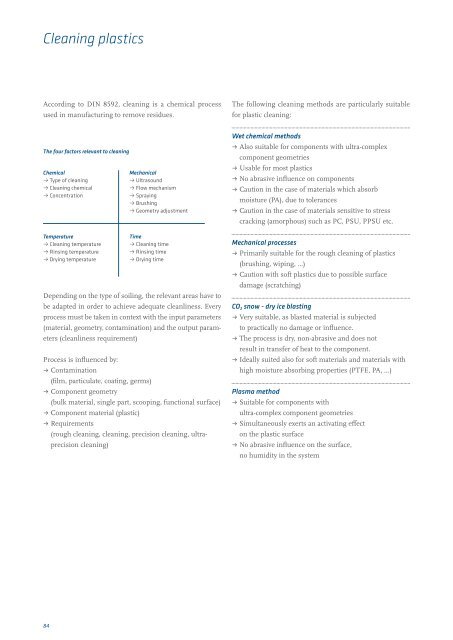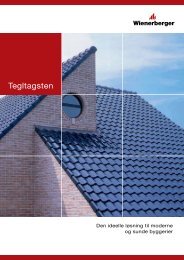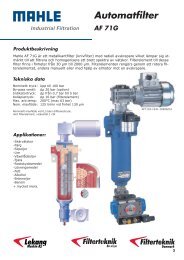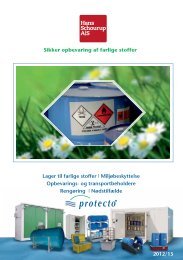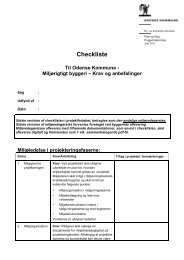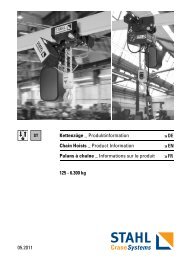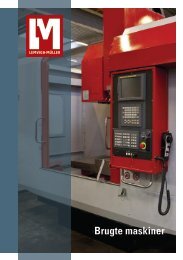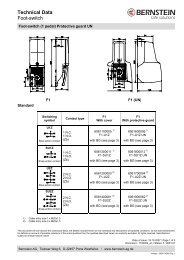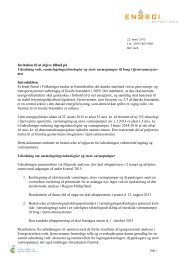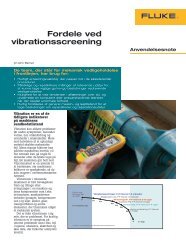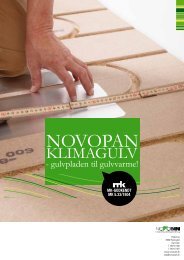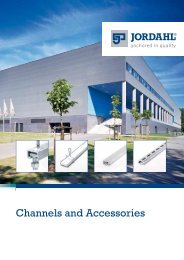Engineering plastics â The Manual - F.wood-supply.dk
Engineering plastics â The Manual - F.wood-supply.dk
Engineering plastics â The Manual - F.wood-supply.dk
You also want an ePaper? Increase the reach of your titles
YUMPU automatically turns print PDFs into web optimized ePapers that Google loves.
Cleaning <strong>plastics</strong><br />
According to DIN 8592, cleaning is a chemical process<br />
used in manufacturing to remove residues.<br />
<strong>The</strong> following cleaning methods are particularly suitable<br />
for plastic cleaning:<br />
<strong>The</strong> four factors relevant to cleaning<br />
Chemical<br />
• Type of cleaning<br />
• Cleaning chemical<br />
• Concentration<br />
Temperature<br />
• Cleaning temperature<br />
• Rinsing temperature<br />
• Drying temperature<br />
Mechanical<br />
• Ultrasound<br />
• Flow mechanism<br />
• Spraying<br />
• Brushing<br />
• Geometry adjustment<br />
Time<br />
• Cleaning time<br />
• Rinsing time<br />
• Drying time<br />
Depending on the type of soiling, the relevant areas have to<br />
be adapted in order to achieve adequate cleanliness. Every<br />
process must be taken in context with the input parameters<br />
(material, geometry, contamination) and the output parameters<br />
(cleanliness requirement)<br />
Process is influenced by:<br />
ˌˌContamination<br />
(film, particulate, coating, germs)<br />
ˌˌComponent geometry<br />
(bulk material, single part, scooping, functional surface)<br />
ˌˌComponent material (plastic)<br />
ˌˌRequirements<br />
(rough cleaning, cleaning, precision cleaning, ultraprecision<br />
cleaning)<br />
Wet chemical methods<br />
ˌˌAlso suitable for components with ultra-complex<br />
component geometries<br />
ˌˌUsable for most <strong>plastics</strong><br />
ˌˌNo abrasive influence on components<br />
ˌˌCaution in the case of materials which absorb<br />
moisture (PA), due to tolerances<br />
ˌˌCaution in the case of materials sensitive to stress<br />
cracking (amorphous) such as PC, PSU, PPSU etc.<br />
Mechanical processes<br />
ˌˌPrimarily suitable for the rough cleaning of <strong>plastics</strong><br />
(brushing, wiping, …)<br />
ˌˌCaution with soft <strong>plastics</strong> due to possible surface<br />
damage (scratching)<br />
CO 2 snow - dry ice blasting<br />
ˌˌVery suitable, as blasted material is subjected<br />
to practically no damage or influence.<br />
ˌˌ<strong>The</strong> process is dry, non-abrasive and does not<br />
result in transfer of heat to the component.<br />
ˌˌIdeally suited also for soft materials and materials with<br />
high moisture absorbing properties (PTFE, PA, …)<br />
Plasma method<br />
ˌˌSuitable for components with<br />
ultra-complex component geometries<br />
ˌˌSimultaneously exerts an activating effect<br />
on the plastic surface<br />
ˌˌNo abrasive influence on the surface,<br />
no humidity in the system<br />
84


